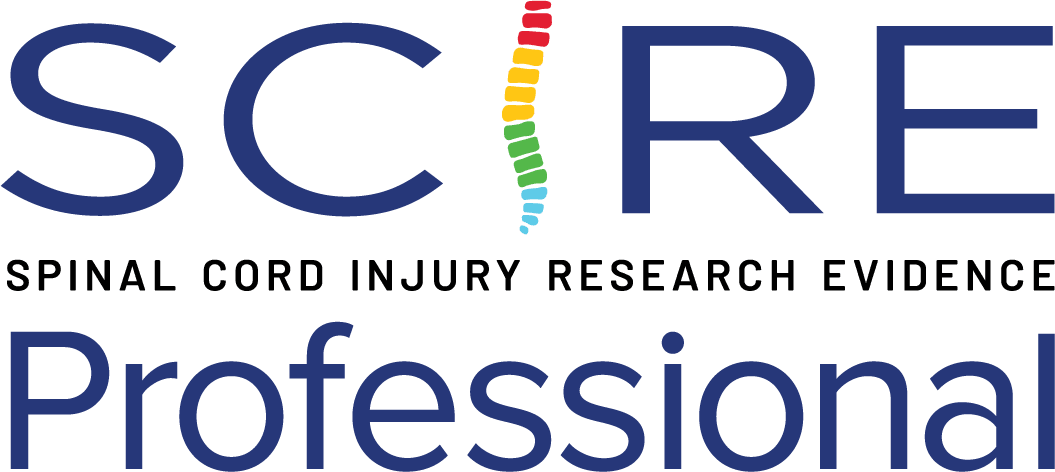Akpinar P, Atici A, Ozkan FU, Aktas I, Kulcu DG, Sarı A, Durmus B. Reliability of the Modified Ashworth Scale and Modified Tardieu Scale in patients with spinal cord injuries. Spinal Cord. 2017 Oct;55(10):944-949.
https://pubmed.ncbi.nlm.nih.gov/28485384/
Ashworth B. Preliminary trial of carisoprodol in multiple sclerosis. Practitioner 1964;192:540-542.
http://www.ncbi.nlm.nih.gov/pubmed/14143329
Aydin G, Tomruk S, Keles I, Demir SO, Orkun S. Transcutaneous electrical nerve stimulation versus baclofen in spasticity: clinical and electrophysiologic comparison. Am J Phys Med Rehabil 2005; 84: 584-492.
http://www.ncbi.nlm.nih.gov/pubmed/16034227
Benz EN, Hornby TG, Bode RK, Scheidt RA, Schmit BD. A physiologically based clinical measure for spastic reflexes in spinal cord injury. Arch Phys Med Rehabil 2005;86:52-59.
http://www.ncbi.nlm.nih.gov/pubmed/15640989
Baunsgaard CB, Nissen UV, Christensen KB, Biering-Sørensen F. Modified Ashworth scale and spasm frequency score in spinal cord injury: reliability and correlation. Spinal Cord. 2016 Sep;54(9):702-8.
https://pubmed.ncbi.nlm.nih.gov/26857270/
Boviatsis EJ, Kouyialis AT, Korfias S, Sakas DE. Functional outcome of intrathecal baclofen administration for severe spasticity. Clinical Neurology and Neurosurgery, 2005; 107: 289-295.
http://www.ncbi.nlm.nih.gov/pubmed/15885386
Craven BC, Morris AR. Modified Ashworth scale reliability for measurement of lower extremity spasticity among patients with SCI. Spinal Cord, 2010; doi:10.1038/sc.2009.107.
http://www.ncbi.nlm.nih.gov/pubmed/19786977
Haas BM, Bergstrom E, Jamous A, Bennie A. The inter rater reliability of the original and of the modified Ashworth scale for the assessment of spasticity in patients with spinal cord injury. Spinal Cord 1996;34:560-564.
http://www.ncbi.nlm.nih.gov/pubmed/8883191
Lechner HE, Frotzler A, Eser P. Relationship between self- and clinically rated spasticity in spinal cord injury. Arch Phys Med Rehabil 2006;87:15-19.
http://www.ncbi.nlm.nih.gov/pubmed/16401432
Lee KC, Carson L, Kinnin E, Patterson V. The Ashworth scale: a reliable and reproducible method of measuring spasticity. Neurorehabilitation and Neural Repair, 1989; 3:205-209.
http://nnr.sagepub.com/content/3/4/205.abstract
Mishra C, Ganesh GS. Inter-rater reliability of modified modified Ashworth scale in the assessment of plantar flexor muscle spasticity in patients with spinal cord injury. Physiother Res Int. 2014;19(4):231-7.
http://www.ncbi.nlm.nih.gov/pubmed/24619735
Penn RD, Savoy SM, Corcos D, Latash M, Gottlieb G, Parke B, Kroin JS. Intrathecal baclofen for severe spinal spasticity. New England Journal of Medicine, 1989; 320(23): 1517-1521.
http://www.ncbi.nlm.nih.gov/pubmed/2657424
Priebe MM, Sherwood AM, Thornby JI, Kharas NF, Markowski J. Clinical assessment of spasticity in spinal cord injury: a multidimensional problem. Arch Phys Med Rehabil 1996; 77:713-716.
http://www.ncbi.nlm.nih.gov/pubmed/8670001
Sherwood AM, Graves DE, Priebe MM. Altered motor control and spasticity after spinal cord injury: subjective and objective assessment. Journal of Rehabilitation Research and Development, 2000; 37 (1): 41-52.
http://www.ncbi.nlm.nih.gov/pubmed/10847571
Skold C, Harms-Ringdahl K, Hultling C, Levi R, Seiger A. Simultaneous Ashworth measurements and electromyographic recordings in tetraplegic patients. Arch Phys Med Rehabil, 1998; 79: 959-65.
http://www.ncbi.nlm.nih.gov/pubmed/9710170
Skold C. Spasticity in spinal cord injury: self- and clinically rated intrinsic fluctuations and intervention-induced changes. Arch Phys Med Rehabil 2000;81:144-149.
http://www.ncbi.nlm.nih.gov/pubmed/10668766
Sinovas-Alonso I, Herrera-Valenzuela D, de-Los-Reyes-Guzmán A, Cano-de-la-Cuerda R, Del-Ama AJ, Gil-Agudo Á. Construct Validity of the Gait Deviation Index for People With Incomplete Spinal Cord Injury (GDI-SCI). Neurorehabil Neural Repair. 2023 Oct;37(10):705-715.
https://pubmed.ncbi.nlm.nih.gov/37864467/
Smith AW, Jamshidi M, Lo SK. Clinical measurement of muscle tone using a velocity-corrected modified Ashworth scale. Am J Phys Med Rehabil, 2002; 81: 202-206.
http://www.ncbi.nlm.nih.gov/pubmed/11989517
Tederko P, Krasuski M, Czech J, Dargiel A, Garwacka-Jodzis I, Wojciechowska A. Reliability of clinical spasticity measurement in patients with cervical spinal cord injury. Ortopedia Traumatologia Rehabilitacja, 2007; 5(6): Vol 9, 467-483.
http://www.ncbi.nlm.nih.gov/pubmed/18026067
